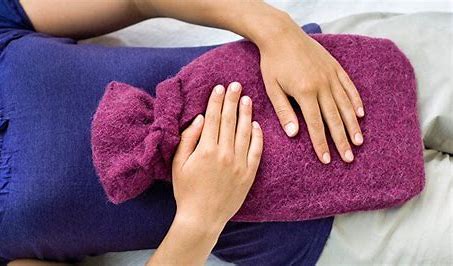
Most women experience menstrual cramps every month. For some, it may be mild and almost unnoticed while for others, it can be so severe that it interferes with work productivity and other activities for the day in each month. Menstrual pain reduces with childbirth, however, for some, it may still remain the same. Understanding the causes behind menstrual pain is crucial for effective management. Here, we provide explanations for the causes of the pain and remedies to alleviate discomfort in order to maintain optimum health during cycle days.
Causes of Menstrual Pain?
Prostaglandins: During menstruation, the lining of the uterus produces hormone-like substances called prostaglandins. These chemicals trigger uterine muscle contractions, which help shed the uterine lining. However, high levels of prostaglandins can lead to stronger, more painful contractions, causing cramps.
Endometriosis: This is a condition where tissue similar to the uterine lining grows outside the uterus. During menstruation, this tissue can become inflamed and cause intense pain.
Fibroids: Uterine fibroids are non-cancerous growths that can develop within the uterine wall. Depending on their size and location, fibroids can cause pain and heavy menstrual bleeding.
Adenomyosis: Similar to endometriosis, adenomyosis involves the tissue that lines the uterus growing into the muscular wall of the uterus. This can result in painful, heavy periods.
Pelvic Inflammatory Disease (PID): PID is an infection of the female reproductive organs, often caused by sexually transmitted bacteria or bacteria from unclean toilets. In addition to menstrual pain, PID can cause pelvic pain, fever, and abnormal vaginal discharge.
Cervical Stenosis: Some women may have a narrow cervix, which can obstruct menstrual flow and cause pain.
Stress: Emotional stress can exacerbate menstrual pain by triggering hormonal imbalances and muscle tension.
List of what to do to Curb Menstrual Pain:
Heat Therapy – Apply a heating pad or take a warm bath to relax abdominal muscles and alleviate cramps.
Over-the-counter Pain Relievers – Nonsteroidal anti-inflammatory drugs (NSAIDs) like ibuprofen or naproxen can reduce prostaglandin production and ease menstrual pain. Be sure to take them as prescribed by your physician.
Herbal Remedies – Herbal teas containing ingredients such as ginger, chamomile, or peppermint can help soothe menstrual cramps.

Exercise – Engage in low-impact exercises like walking, yoga, or swimming to promote blood circulation and release endorphins, which act as natural painkillers.
Dietary Adjustments – Consume foods rich in omega-3 fatty acids (such as salmon, flaxseeds, and walnuts) and avoid caffeine, alcohol, and salty foods, which can exacerbate bloating and inflammation.
Birth Control – Hormonal contraceptives such as birth control pills, patches, or hormonal IUDs can regulate menstrual cycles and reduce the severity of menstrual pain for some women.
Magnesium Supplements – Magnesium is thought to help relax muscles and reduce cramping. Taking magnesium supplements or consuming magnesium-rich foods like spinach, nuts, and whole grains may offer relief.

Relaxation Techniques – Practice stress-reducing activities such as meditation, deep breathing exercises, or progressive muscle relaxation to ease tension and promote overall well-being. You may also want to nap to loosen some muscles and relax the nerves for easy blood flow which can eventually alleviate discomfort.
Medical Consultation – If menstrual pain is severe or significantly impacts daily life, consult a healthcare provider. They can diagnose underlying conditions and recommend appropriate treatment options, such as prescription medications or surgical interventions.
In sum, menstrual pain is a common yet distressing experience for many women. By understanding the underlying causes and implementing effective remedies, individuals can better manage menstrual discomfort and improve their overall quality of life. However, it’s essential to consult with a healthcare professional for personalised advice and treatment options tailored to individual needs. With the right approach, menstrual pain can be alleviated, allowing women to navigate their menstrual cycles with greater comfort and ease.













